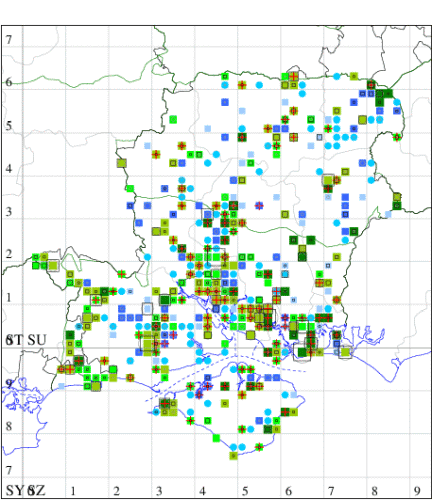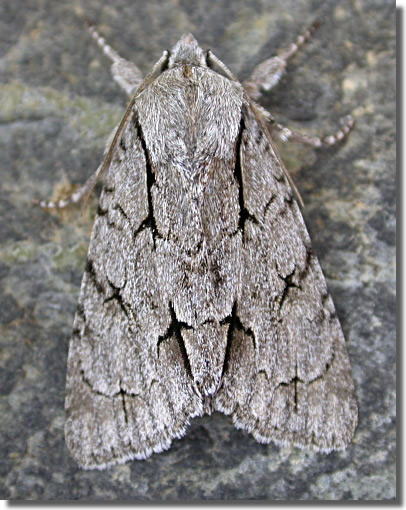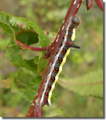Grey Dagger
Acronicta psi
Checklist Number73.038 [B&F: 2284]
Verification
Record requires retention of specimen until confirmed, and may require dissection. Consult with CMR if unsure
Classification
| Family: | Noctuidae |
| Subfamily: | Acronictinae |
| Genus: | Acronicta |
| Species: | psi |
| Authority: | (Linnaeus, 1758) |
Common in woodland, hedgerows, gardens, scrubby heathland, calcareous grassland, fens and a wide range of other habitats; low altitudes in the north throughout much of the British Isles, a species of conservation concern under the UK Biodiversity Action Plan. In Hampshire and on the Isle of Wight very much more common than Dark Dagger, but undoubtedly under-recorded. Wingspan 33-44 mm. Very similar to Dark Dagger A. tridens, from which separated only by dissection of the genitalia. The larvae of the two species are readily identifiable. Larva feeds on various broad-leaved trees and shrubs, including Blackthorn, Hawthorn, Apple, Birch, Common Lime, English Elm and Rowan, over-wintering as a pupa.


The abundance in each month is indicated as follows:
 No records
No records Very occasional
Very occasional Irregular
Irregular Uncommon
Uncommon Off-peak, but not unusual
Off-peak, but not unusual Off-peak, but not unusual
Off-peak, but not unusual Main flight time
Main flight time| J | F | M | A | M | J | J | A | S | O | N | D | |
|---|---|---|---|---|---|---|---|---|---|---|---|---|
| Adult |  |  |  |  |  |  |  |  |  |  |  |  |
| Larval |  |  |  |  |  |  |  |  |  |  |  |  |




